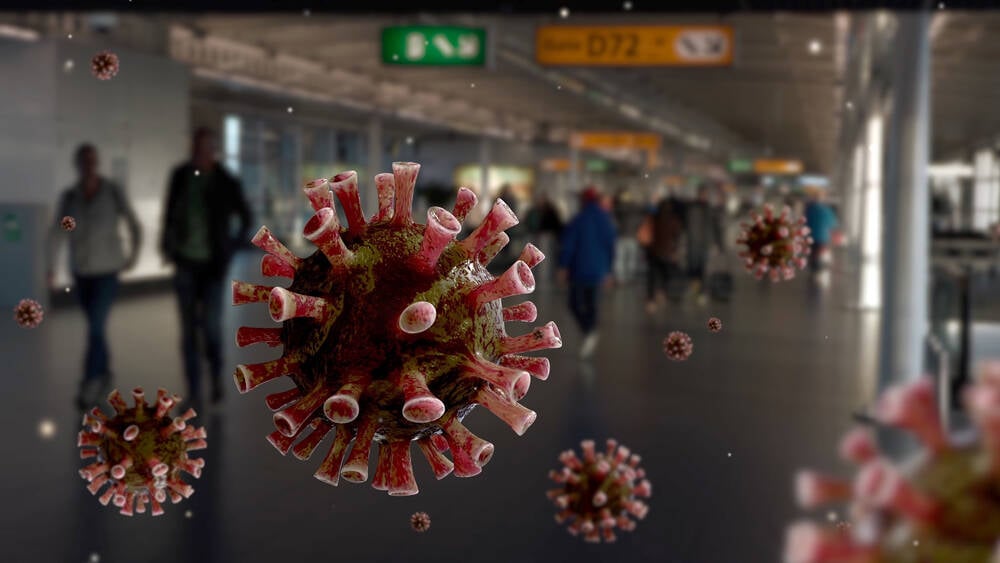Petaflops Help Scientists Understand Why Some COVID-19 Variants Are More Contagious

Supercomputer-power calculations have helped to uncover how certain variants of the COVID-19 virus "improve" – ie, become more contagious – through their binding energy with human cells.
A lab at Ohio’s University of Toledo has specialized in understanding molecular recognition, the process by which two molecules find each other, and bind together to act-out a biological function.
At the start of the pandemic, Xiche Hu, associate professor at the department of chemistry and biochemistry, thought the work might be well placed to help explain the way the nefarious virus spreads among humans.
Through a COVID-inspired scheme, he bid for resources from the Ohio Supercomputer Center (OSC) to cut the time taken for calculation set to describe the coronavirus's binding processes. Collectively, OSC supercomputers provide a peak computing performance of 7.5 Petaflops. The center also offers approximately 16 petabytes of disk storage capacity distributed over several file systems, plus more than 14 PB of available backup tape storage.
“We immediately realized that there were many molecular recognition issues, so we felt duty-bound to study this,” Hu said. “The Ohio Supercomputer Center (OSC) had called for researchers studying the coronavirus, offering a special grant. We applied and were granted priority access and an unlimited budget for 18 months.”
Joined by two doctoral students, Pawan Bhatta and Majed Aljohani, he began looking at differences between the original SARS-CoV-2 and new so-called variants of concern (VoC) at the atomic level. VoC are those strains which health orgs consider problematic because of their increased transmissibility, morbidity or mortality rates.
Using supercomputing resources, the team were able to perform high-level calculations at an accelerated rate.
“If we did one of these calculations in our lab, we are talking about weeks or months, but when we do it at OSC we can finish it within days,” Hu said.
- Foxconn expands Vietnam factories, perhaps to help Apple diversify beyond China
- Singapore pulls plug on COVID tracking program
- No, AI can't tell if you've got COVID-19 by listening to your coughs
- Corporate execs: Get back, get back, to the office where you once belonged
“We often need to do multiple calculations in parallel, so the OSC resources are instrumental to this research.”
The mission was to find the binding energy between COVID-19’s spike proteins and the human receptors within the cell, because higher binding energy means the virus becomes more contagious.
The results showed that four out of five variants studied exhibited a common mutation, N501Y, which increased the binding energy between parts of the human cell and the virus. Meanwhile, the mutation also helps the virus to create a network of water molecules that could increase infection rates.
The hope is the findings could help the scientists develop methods to fight the COVID-19 pandemic by “screening a library of compounds to find which molecules can block out the binding site, preventing infection,” Hu said. ®
From Chip War To Cloud War: The Next Frontier In Global Tech Competition
The global chip war, characterized by intense competition among nations and corporations for supremacy in semiconductor ... Read more
The High Stakes Of Tech Regulation: Security Risks And Market Dynamics
The influence of tech giants in the global economy continues to grow, raising crucial questions about how to balance sec... Read more
The Tyranny Of Instagram Interiors: Why It's Time To Break Free From Algorithm-Driven Aesthetics
Instagram has become a dominant force in shaping interior design trends, offering a seemingly endless stream of inspirat... Read more
The Data Crunch In AI: Strategies For Sustainability
Exploring solutions to the imminent exhaustion of internet data for AI training.As the artificial intelligence (AI) indu... Read more
Google Abandons Four-Year Effort To Remove Cookies From Chrome Browser
After four years of dedicated effort, Google has decided to abandon its plan to remove third-party cookies from its Chro... Read more
LinkedIn Embraces AI And Gamification To Drive User Engagement And Revenue
In an effort to tackle slowing revenue growth and enhance user engagement, LinkedIn is turning to artificial intelligenc... Read more

